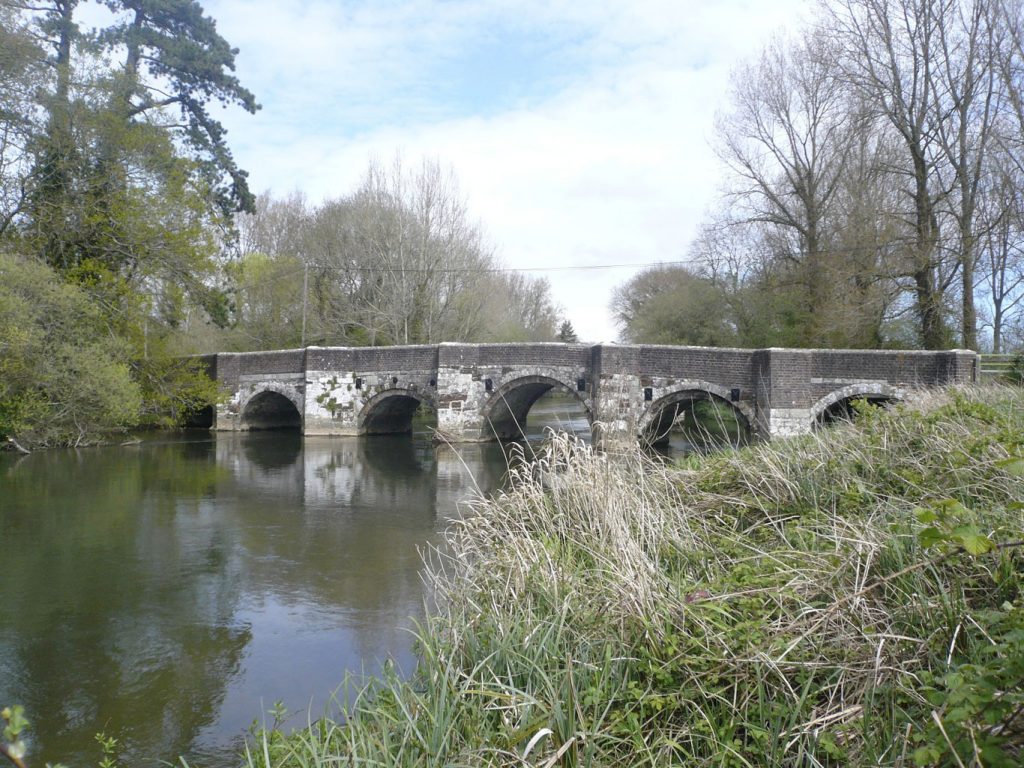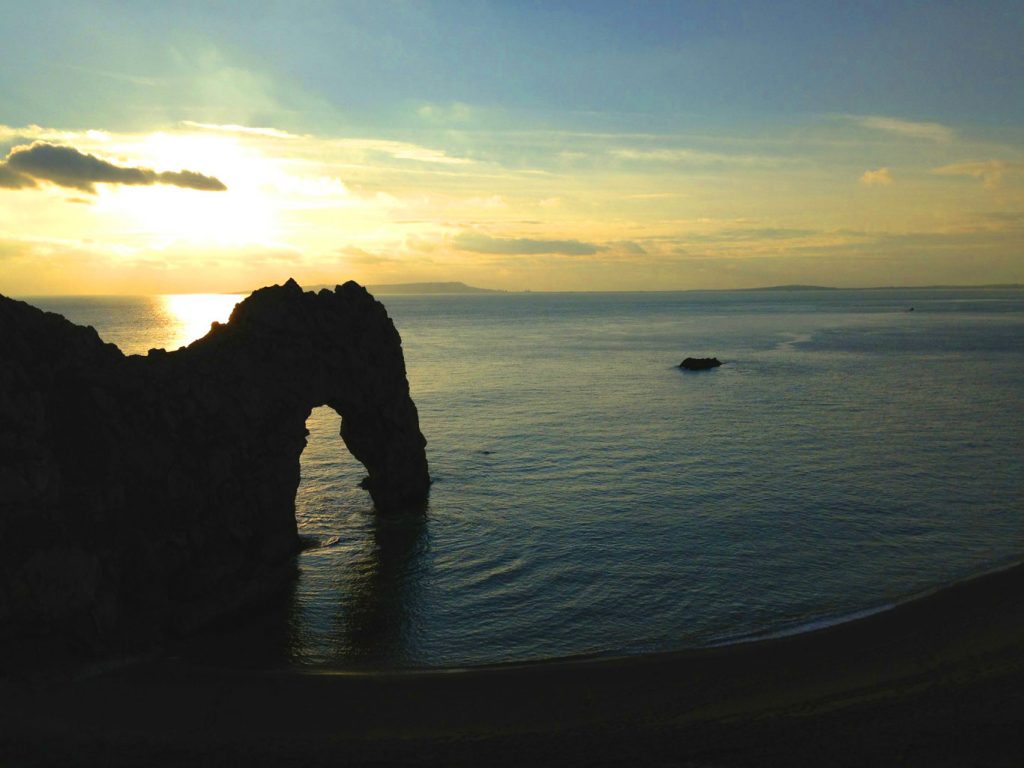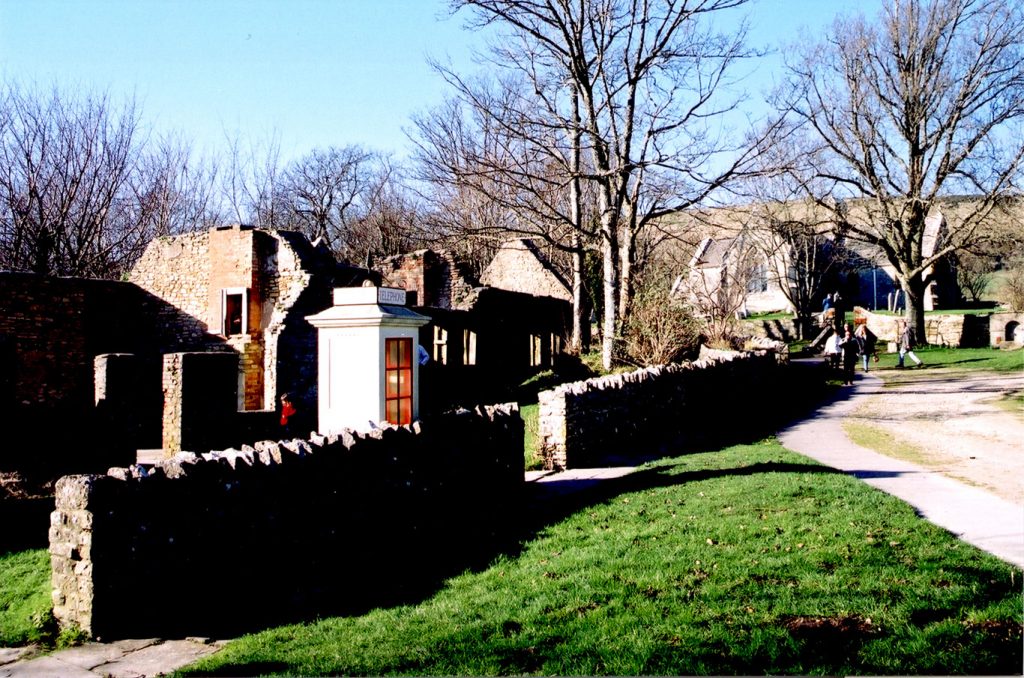Lulworth history
A brief history of Lulworth and the surrounding area.
Lulworth or named Lulstead Cove in Thomas Hardy’s ‘Far From The Madding Crowd‘, is one of the most famous beauty spots on the South Coast of England, shaped like an almost perfect horse shoe it is sandwiched between two gems of land formation and unique geological structures. The rock-arch of Durdle Door to the west of the cove and the Fossil Forest to the east, sitting up on a ledge Cove above the English Channel.
The surrounding countryside & coastline is some of the most beautiful and unspoilt in Southern England, which has now been recognised as being totally unique having gained World Heritage status. Lulworth has a permanent exhibition in the Visitor Centre showing the history and geological importance of the East Devon & Dorset World Heritage ‘Jurassic’ Coastline along with a standing stone unveiled by Prince Charles in 2002.
In the past Lulworth has not just been home to dinosaurs in a carboniferous forest and ammonites in the surrounding warm sea 65 million years ago, it has had many other famous and infamous residents and visitors in more recent years.
Iron age man started by felling trees, forming field systems and building a hill fort on Bindon Hill behind the cove along with burying their king on the top of Hambury Tout beside the path to Durdle Door. The Romans came and used the safe anchorage of the cove for their ships and merchant vessels to supply the garrison and town of Dorchester – some people say that they can still hear the rattle of the amour of Roman legions marching over the hills behind Lulworth!
A community of Trappist monks escaping from France set up home and built a little chapel in 1300’s on the east of the cove at Little Bindon before later moving inland to Bindon Abbey – other French exiles stayed in Lulworth including King Charles X and legend has it that Napoleon landed here to reconnoitre the practicalities of invasion but while standing on a rock in the cove sighed before turning his attentions on Russia! Sir Francis Drake engaged the Great Spanish Armada along the coast nearby driving a Spanish man-o-war on to the rocks west of St Oswald which is still called Man-o-War bay.
Lulworth Castle was built in the early 17th century by Thomas Howard, 3rd Viscount Bindon. He was a member of the huge Howard clan who were in great favour at the court of James I. Designed grand hunting James the first was a regular visitor. During the Civil War, Corfe Castle and Bindon Abbey were destroyed and Lulworth Castle was badly damaged, in 1643 the estate was purchased by Humphrey Weld, a wealthy Londoner and the family still own the estate. The Castle was seriously damaged by a fire in 1929 and remained a shell until recently. The parkland around Lulworth Castle has seen royal romps & romances, notably that of the Roman Catholic Maria Anne Smythe who married King George IV in a liaison outlawed by Parliament.
The Catholic church of St Mary in the park was built by Thomas Weld in 1786 – 87 to designs of John Tasker. and the family tradition holds that they were only allowed to build a church if it did not resemble one. Accordingly the family built a neo-classical building that looks like a large garden temple. The interior has a central dome and the four apses leading off this have half-domes. Most of the original fittings remain including the marble altar obtained from Rome.
The Cove was and maybe still is a firm favourite with smugglers being extremely sheltered, it could therefore be used in virtually all weathers, and was of course the ideal spot to sink tubs. One, a hogshead of French red, bobbed up in 1717, and was promptly seized, though it proved to be ‘poor thin stuff that will not keep’.
A couple of years later nearly a dozen smugglers were stopped near the cove as they tried to run wine and brandy in the early hours of a summer’s morning. They fought like demons with flails, swords and clubs, and when it looked like they’d lose the cargo, the smugglers staved in some of the barrels, and made off with the remainder. The battle between smugglers and revenue men went on for some twelve hours, and attracted people from four parishes, who ran off with the abandoned barrels.
In the early years of the 18th century the local venturer at Lulworth was one Charles Weeks, who lived at Winfrith, and who had developed a particularly shrewd way of defrauding the revenue. He would buy seized goods at legitimate auctions, and mix in the smuggled article for onward shipment, often to London. When an officer challenged Weeks to produce receipts showing that duty had been paid, Weeks could often do so. When he couldn’t, he would threaten the officer with litigation; on the pittance paid by the government, no customs officer could afford a legal action, so the smuggler escaped.
Smugglers are said to have stored contraband in a cave at the most easterly point of Mupe Bay. In 1906 it can be reached following the coast from Lulworth, and by descending the cliff the moment the bay is reached. The cave is at the foot of the precipice, at a spot where a little channel has been cleared between the boulders for a boat to land.
The Lulworth men evidently took no chances of being identified by the local customs authorities: on a tombstone in Weymouth’s Bury Street cemetery there is the following inscription:
Sacred to the memory of Lieut. Thos Edward Knight, RN, of Folkestone, Kent, Aged 42, who in the execution of his duty as Chief Officer of the Coastguard was wantonly attacked by a body of smugglers near Lulworth on the night of 28th of June 1832, by whom after being unmercifully beaten he was thrown over the cliff near Durdle Door from the effects of which he died the following day.
Writers to have been drawn by Lulworth’s charms include John Keats who wrote the poem ‘Bright Star, Would I Were Stedfast’ while visiting in 1819. Rupert Brooke and Bertrand Russell, have also visited Lulworth for inspiration and the Georgian playwright John O’Keeffe found his model for John Barleycorn in the Red Lion, now no longer a pub but a private house called Churchfields, in West Lulworth.
Thomas Hardy had Troy swim in Lulworth Cove, Lulstead or Lulwind Cove in ‘Far From The Maddin Crowd’ – “Troy came to a small basin of sea enclosed by the cliffs. He undressed and plunged in. Inside the cove the water was uninteresting to a swimmer, being smooth as a pond, and to get a little of the ocean swell, Troy presently swam between the two projecting spurs of rock which formed the pillars of Hercules to this miniature Mediterranean.” Later on Hardy wrote a 1920 Poem commemorating Keats’s visit to Lulworth Cove called…
‘At Lulworth Cove a Century Back’.
Had I but lived a hundred years ago
I might have gone, as I have gone this year,
By Warmwell Cross on to a Cove I know,
And Time have placed his finger on me there:
‘You see that man?’ — I might have looked, and said,
‘O yes: I see him. One that boat has brought
Which dropped down Channel round Saint Alban’s Head.
So commonplace a youth calls not my thought.’
‘You see that man?’ — ‘Why yes; I told you; yes:
Of an idling town-sort; thin; hair brown in hue;
And as the evening light scants less and less
He looks up at a star, as many do.’
‘You see that man?’ — ‘Nay, leave me!’ then I plead,
‘I have fifteen miles to vamp across the lea,
And it grows dark, and I am weary-kneed:
I have said the third time; yes, that man I see!’
‘Good. That man goes to Rome — to death, despair;
And no one notes him now but you and I:
A hundred years, and the world will follow him there,
And bend with reverence where his ashes lie.’
Paddle-steamers with specially strengthened bows brought the wider public right in onto the beach at the Cove in Victorian times.
T.E.Lawrence who used the pseudonym Shaw to avoid publicity after his return from North Africa, where he was better known as ‘Lawrence of Arabia’. bought the cottage not far from Lulworth at Clouds Hill and it became his ‘earthly paradise’ where he found the peace and quiet he needed to work on ‘Seven Pillars of Wisdom’ which was published in 1926. Then in 1935, after spending many years in the Air Force away from the cottage, Lawrence was discharged at the age of 46 and returned to Clouds Hill to live out his days. Five days later he was killed in a crash on his motor cycle when returning to Clouds Hill from Bovington Camp nearby and was buried in the local churchyard.
The tiny rooms of Clouds Hill are as Lawrence left them with simple and austere furnishings, some of which he made himself. The cottage reflects his complex personality and monastic way of life. The crowded book room is lined with shelves from floor to ceiling. Under the roof is the music room, which contains Lawrences’s wind-up gramophone with its huge horn curling over a leather sofa. His 78rpm. records are still there, as are photographs relating to his Arabian campaign.
The domineering house called Weston now hidden in the trees near the cove, designed for a friend by the famous architect Sir Edward Lutyens became home for the stars when Sir Lawrence Olivier and Vivienne Leigh spent the first night of their honeymoon there although they were apparently somewhat upset by being woken early in the morning by the lady of the house!



